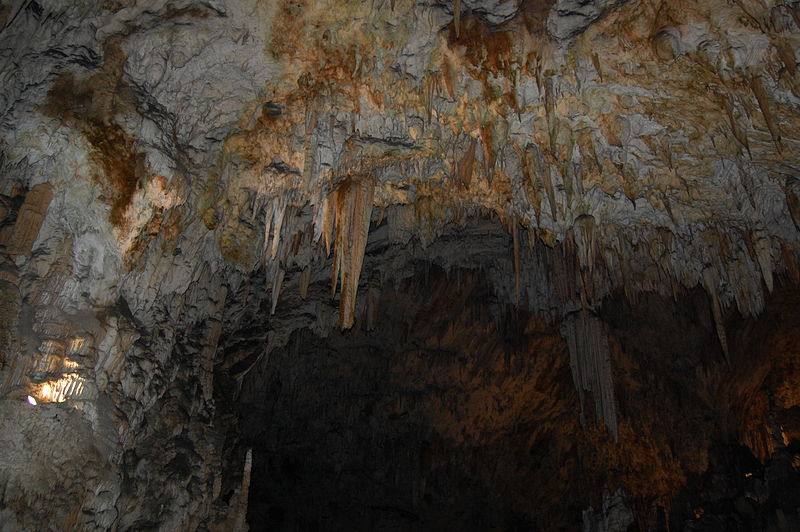
Habitat
The Meta menardi is a large cave spider primarily found in the northern
hemisphere stretching from northern Europe to Korea (Lepore et
al. 2012). They have
also been located in northern Africa (Lepore et al. 2012).
Meta menardi is
most commonly found in man-made and natural caves of Europe
(Novak et al. 2010).
This spider has been largely found in caves Slovenian caves
where they have been well studied (Novak et al. 2010).
Also, Meta menardi
has been studied for its presence in Finland particularly the
south-westernmost part of the country and on the Aland Islands
(Fritzén
and Koponen 2011).
The European Cave Spiders are mainly found in dark, medium level humidity caves, mineshafts, damp cellars, railway tunnels and sewers (SHRS 2014). Meta menardi seems to prefer stable, sheltered, subterranean habitats that are not too hot (Fritzén and Koponen 2011). They have also been found to persist to colder temperatures of northern Europe primarily in Finland (Fritzén and Koponen 2011). In the Aland Islands of Finland these spiders have been known to also live in cave-like crevices, cellars, and the stone/boulder fields of the area (Fritzén and Koponen 2011). They like to take over abandoned the old stone estates, houses, and manors (Fritzén and Koponen 2011). Areas that have a very high humidity and continuous drafts of air flowing through them are avoided for these spiders (ESA 2012). Also, dry habitats do not house these spiders (SHRS 2014). M. menardi is known to live in the twilight zone of caves, which is the area just past the entrance of the cave (Smithers 2005).
This
zone provides the cave spider with access to light while avoiding
the extremes of the external environment (Smithers 2005).
The dark entry zone can act
has an obstacle for many other invertebrates, lowering the potential
amount of prey for Meta
menardi (Smithers 2005).
But, the abundance of prey must be at a reasonable amount
since Meta menardi still
strives to live and keep a sustainable population size in these
conditions (Smithers 2005).
These transitional habitats demonstrate low species
diversity, but comparatively consistent environmental factors (Novak
et al. 2010).
 In
Slovenian caves, the Meta
menardi lives syntopically with the
Metellina merianae a
similar sized orb-weaving spider that is closely related (Novak et
al. 2010). These species
live near each other in relatively the same area of the cave.
But, each species seems to use different hunting strategies
for capturing its prey so they do not interfere with one another
(Noval et al. 2010).
Metellina merianae builds larger webs usually twice the size of
Meta
menardi allowing them to
capture more flying prey (Novak et al. 2010).
While the Meta menardi
uses smaller webs with a larger mesh size built closer to the
surfaces of the cave (Noval et al. 2010).
Another species they have been known to live near are the
Hydromantes salamanders or
European Cave Salamanders (Ficetola et al. 2013).
These species both prey on arthropods located in the
underground hollows, but the
salamanders
also
can prey on the Meta menardi (Ficetola et al. 2013).
In
Slovenian caves, the Meta
menardi lives syntopically with the
Metellina merianae a
similar sized orb-weaving spider that is closely related (Novak et
al. 2010). These species
live near each other in relatively the same area of the cave.
But, each species seems to use different hunting strategies
for capturing its prey so they do not interfere with one another
(Noval et al. 2010).
Metellina merianae builds larger webs usually twice the size of
Meta
menardi allowing them to
capture more flying prey (Novak et al. 2010).
While the Meta menardi
uses smaller webs with a larger mesh size built closer to the
surfaces of the cave (Noval et al. 2010).
Another species they have been known to live near are the
Hydromantes salamanders or
European Cave Salamanders (Ficetola et al. 2013).
These species both prey on arthropods located in the
underground hollows, but the
salamanders
also
can prey on the Meta menardi (Ficetola et al. 2013).